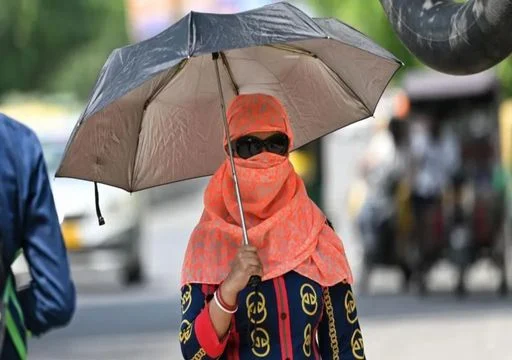The Indian Meteorological Department (IMD) announced that this new record was set in the suburb of Mungeshpur, surpassing the previous maximum temperature recorded in New Delhi, which was 49.2°C in May 2022.
A heatwave alert has been in effect across vast parts of the country since last week, but today the temperature in the capital exceeded the 50°C mark, as reported by the meteorological office.
Atishi Marlena Singh, a senior member of the Indian capital’s government, highlighted that in some areas of the city, water is scarce, while in others, access to it is simply nonexistent.

Areas that used to receive water supply twice a day are now facing reductions, being supplied only once—a measure aimed at reallocating resources to regions experiencing extreme shortages, emphasized the minister.
In addition to the intense heatwave, another contributing factor to the water scarcity was the disruption in the water supply from the northern state of Haryana to New Delhi, an event that occurred unusually, according to Singh.
To combat the crisis, local governments have implemented restrictions on water supply in New Delhi, along with fines of 2,000 rupees for those wasting water, such as washing cars.
Meanwhile, temperatures continue to rise in other parts of the country. In Churu, Rajasthan state, thermometers reached 50.5°C. In Sirsa, a city in Haryana state, authorities recorded a temperature of 50.3°C, highlighting the extent of the extreme heat affecting India.
After reports of students fainting at a public school, the government of the eastern state of Bihar decided to close all schools until June 8 as a precautionary measure.
Although heatwave conditions continue to prevail during the day, a gradual decrease is expected starting Thursday (30), according to the Indian Meteorological Department (IMD).
The heat-related tragedy in India is a severe and recurring phenomenon. Since 1992, more than 24,000 people have lost their lives due to extreme heat, underscoring the country’s vulnerability to such events.
Experts warn that intense heat is becoming more common and severe worldwide due to the ongoing climate crisis. India, in particular, faces significant challenges, with some regions exceeding the limits of human survival capacity during heatwaves. A study highlighted that heatwaves have already caused over 24,000 deaths in the country since 1992, underlining the urgency of measures to address this growing threat.
The research warns that the increase in heat events in the coming years could pose a significant threat to India’s development, jeopardizing progress made in poverty reduction, health improvement, and the country’s economic growth.
Gufran Beig, a senior professor at the Indian Institute of Science, explained to Reuters that an atypical transition from El Niño to La Niña, coupled with the absence of moisture-bringing winds, is contributing to an extended period of intense heat, resulting in record-breaking temperatures.
These anomalous weather events have serious and immediate consequences, not only for the well-being of Indian citizens but also for the country’s economic and social stability as a whole. The impact of extreme heat is an urgent reminder of the need for decisive actions to mitigate the effects of climate change and protect vulnerable communities from the growing risks associated with rising temperatures.
The El Niño phenomenon, characterized by the warming of Pacific waters, typically results in drier conditions in the Indian subcontinent, while La Niña, marked by exceptionally cold temperatures in the same ocean, has the opposite effect.
According to the expert interviewed by Reuters, there is suspicion that all these climatic anomalies are linked to global climate change.
In a dramatic contrast, parts of northeastern India were impacted by heavy rains caused by Cyclone Remal. In the Indian state of Mizoram, at least 27 people lost their lives due to the collapse of a quarry and multiple landslides. Additionally, parts of Assam, bordering Bangladesh, were flooded by intense rainfall. This contrast of extreme weather events highlights the complexity and challenges India faces amid global climate change.
This combination of extreme events—the record heat in New Delhi, heavy rains in northeastern India, and atypical weather patterns linked to El Niño and La Niña—underscores the urgency of actions to address climate change. As the planet warms, the adverse impacts on communities and the environment intensify, requiring coordinated and effective responses at local, national, and global levels.
India, like other nations, faces significant challenges stemming from these climate changes. It is crucial to implement adaptation and mitigation measures to protect vulnerable populations, strengthen infrastructure resilience, and promote sustainable practices.
Moreover, continued commitment to reducing greenhouse gas emissions and transitioning to clean, renewable energy sources is essential. Only through collective and determined efforts can we hope to tackle the challenges of climate change and build a safer, more sustainable future for all.
The interconnection between extreme weather events in India also highlights the need for a holistic approach to addressing climate change. Individually, the challenges posed by intense heat, heavy rains, and other weather phenomena may appear distinct, but their convergence underscores the complexity and interdependence of natural systems.
Therefore, it is imperative to adopt integrated strategies that consider not only the immediate repercussions of these events but also their underlying causes and the long-term impacts on climate, the environment, and society. This requires robust international cooperation, effective governance, and the coordinated mobilization of resources to tackle the complex challenges of climate change in all its manifestations. By recognizing and acting on this interconnection, we can work toward more resilient and sustainable solutions that protect vulnerable communities and foster a more equitable and secure future for all.

